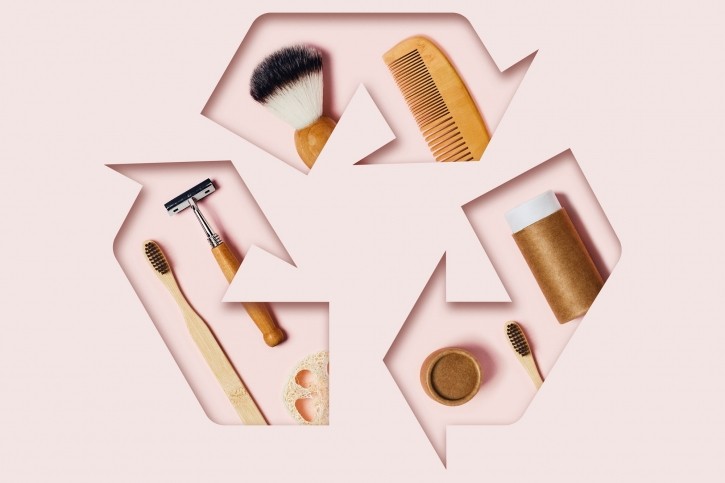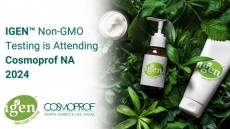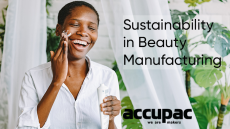CleanHub report: 95% of beauty packaging waste goes unrecycled

As the beauty industry continues to grapple with its environmental impact, CleanHub, a Berlin-based environmental organization, is working to address plastic pollution through scalable waste management solutions. By connecting coastal communities with proper waste collection services, CleanHub aims to mitigate the impact of plastic waste on the environment.
The organization has collaborated with over 300 brands and employs AI technology to ensure transparency and efficiency in waste tracking.
In this CosmeticsDesign Q&A, Nikki Stones, Vice President of Marketing at CleanHub, provides an overview of the company's mission, discusses the environmental impact of the beauty industry, and outlines the steps that can be taken to address these issues. Stones provides insights into the challenge of recycling beauty product packaging, the impact of microplastics on marine ecosystems, and emerging trends in sustainability within the beauty sector.
CDU: Can you provide a brief overview of CleanHub and its mission?
Nikki Stones (NS): CleanHub is a Berlin-based company building a scalable solution to plastic pollution. We do this by connecting people in coastal regions to proper waste collection where it didn’t exist before. We create safe and dignified jobs within local communities, and our initiatives ensure waste is properly managed, preventing it from entering our oceans.
Brands can support our mission by funding waste collection efforts: this support targets waste that would otherwise remain uncollected, and our AI technology tracks waste from collection to disposal. The process is verified by TÜV SÜD according to ISO standards, ensuring full transparency, and to date, we have collected over 9.5 million kilograms of plastic waste with over 300 brand partners funding our efforts.
Looking ahead, we aim to establish a CleanHub (our own waste collection center) in every coastal pollution hotspot lacking proper waste management. Our mission is to create a plastic-free world, ensuring safe and dignified waste management for all.
CDU: What prompted CleanHub to focus on the environmental impact of the beauty industry specifically?
NS: The beauty industry is a major contributor to environmental pollution, primarily due to its extensive use of plastic packaging and synthetic ingredients. Based on our latest Clean Beauty Survey, we've observed a huge shift towards an eco-conscious mindset among beauty consumers.
The majority are not just concerned, but they're actively seeking out brands that prioritize sustainable practices. This heightened awareness has translated into a tangible consumer demand for transparency and ethical responsibility from beauty brands.
CDU: Could you elaborate on the types of packaging that are most commonly not recycled and why?
NS: The most commonly non-recycled packaging types in the beauty industry include plastic containers such as bottles and tubes. These materials are challenging to recycle primarily because they are often made from mixed plastics or contain multiple components that are difficult to separate, such as pump-action bottles made with different plastic resins and metal springs.
Additionally, many of these packaging items are contaminated with product residues, making them unsuitable for recycling without extensive cleaning.
CDU: How did CleanHub gather the data presented in its most recent Clean Beauty Survey?
NS: CleanHub gathered the data from our own surveys and research as well as industry reports including those from the Environmental Investigations Agency, British Beauty Council, and Plastic Soup Foundation to name a few.
CDU: The report mentions that only 13% of beauty products are free from microplastics. What are the main sources of microplastics in beauty products?
NS: A 2020 study found that 70% of personal care and cosmetic products contain microbeads, primarily made of polyethylene (PE). Manufacturers add microplastics to cosmetics, shampoos, hair sprays, and creams to enhance texture, durability, and exfoliating properties.
These microplastics are quickly washed away after use, entering our environment through wastewater.
CDU: How do microplastics from beauty products impact marine life and ecosystems?
NS: Microplastics from beauty products pose a significant threat to marine life and ecosystems. They are ingested by various marine organisms, quickly moving up the food chain.
A 2021 scientific report revealed that all 240 fish, squid, and shrimp specimens studied contained microplastics. These particles threaten marine life by affecting feeding behavior, reducing fertility, and causing structural damage to fish intestines, liver, gills, and brain.
CDU: With consumer beauty product use accounting for 59% of emissions, what can be done to reduce this impact?
NS: To reduce the 59% of emissions from consumer use of beauty products, consumers and brands can take several actions. From the consumer's perspective, education about sustainability, supporting eco-friendly brands, participating in recycling programs, and holding companies accountable are crucial steps. From the brand's perspective, they can design products that use less energy during consumer use, promote refillable or reusable packaging, and ensure transparent communication about their sustainability efforts.
CDU: What are the main ethical concerns highlighted in your report, particularly regarding animal testing and working conditions?
NS: The main ethical concerns highlighted in our article are animal testing and poor working conditions. Many beauty brands still test their products on animals, with 88% of major cosmetic brands not being cruelty-free. According to the Humane Society, approximately 500,000 animals suffer and die each year due to these practices.
In terms of working conditions, there have been reports of poor conditions for factory workers in developing countries who produce cosmetics. Additionally, there are significant issues in the sourcing of ingredients, such as mica, a mineral which is often linked to forced child labor in countries like India.
CDU: How can consumers identify and support cruelty-free and ethically produced beauty products?
NS: Consumers can identify and support cruelty-free and ethically produced beauty products in the following ways:
- Look for eco labels like CleanHub, PETA's Beauty Without Bunnies, and 1% for the Planet.
- Choose products with natural and organic ingredients.
- Support brands involved in environmental and social initiatives.
- Stay informed through blogs and news outlets focused on cruelty-free and ethical beauty.
CDU: What are the emerging consumer expectations regarding eco-friendly beauty products, and how can manufacturers meet these demands?
NS: Consumers demand holistically eco-friendly beauty products. Manufacturers can meet these expectations by investing in recyclable and refillable packaging, sourcing ingredients ethically, and developing products free from harmful chemicals.
Implementing take-back and recycling programs further aligns with consumer demands. Additionally, manufacturers could obtain credible eco-certifications or partner with reputable organizations such as CleanHub, which is verified according to ISO standards. This ensures legitimacy, avoids greenwashing, and enhances consumer trust.
CDU: How are market trends evolving in terms of sustainability in the beauty industry?
NS: The beauty industry is increasingly focusing on sustainability, driven by consumer demand and regulatory pressures. Conscious consumerism and sustainability initiatives are among the most relevant trends.
Over the last few years, consumer appetite has shifted towards supporting a healthier planet. Almost half of consumers surveyed by CleanHub said they would pay more for brands with sustainable packaging.
This shift has spurred brands to reduce plastic use through recycling schemes, ethical sourcing, and closed-loop circular economy practices. Additionally, companies are investing in sustainability initiatives like CleanHub to reduce plastic pollution and using verifications or logos on packaging to communicate their commitment to sustainability.
CDUL: How can other stakeholders (e.g., governments, NGOs) support CleanHub's mission?
NS: Governments and NGO can significantly support CleanHub's mission to reduce plastic pollution and promote sustainable waste management.
- Governments can enact and enforce Extended Producer Responsibility (EPR) regulations, ensuring manufacturers are accountable for the entire lifecycle of their products, including post-consumer waste.
- Providing financial support through grants can help improve recycling infrastructure and expand waste collection systems.
- NGOs can partner with CleanHub on community engagement projects, advocate for stronger environmental policies, and share expertise.
CDU: What future initiatives or projects does CleanHub have planned to further address the environmental issues in the beauty industry?
NS: CleanHub is committed to expanding our impact by partnering with more brands in the beauty industry that want to use their business as a force for good, by funding plastic waste collection in pollution hotspots. To inspire further action, we will be involving more beauty brands in our regular events such as LinkedIn Live sessions and community cleanups.
These initiatives aim to raise awareness, showcase sustainable practices, and encourage more companies to join our mission for a plastic-free world.
















